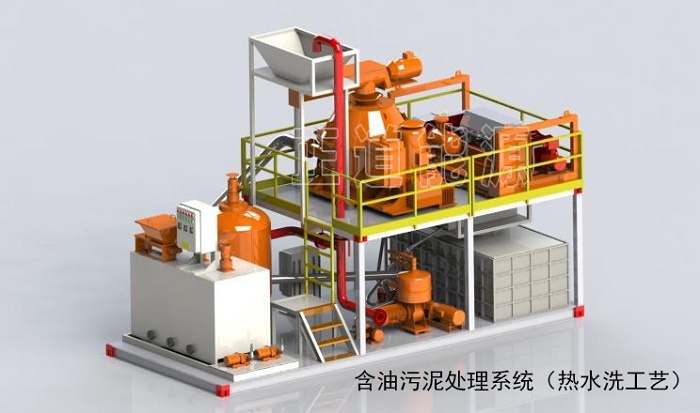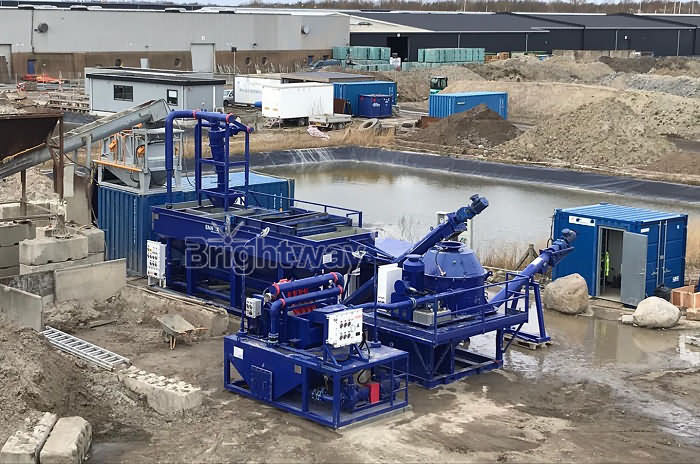The selection and application of oil sludge treatment technology and treatment equipment has promoted the positive benefits of oilfield soil remediation and sustainable development of resources.

Oil sludge is a kind of hazardous waste produced in industrial production, but it contains more useful substances such as waxes, asphaltenes, gums, etc. Therefore, sludge is a substance with high recycling value. There are many harmless treatment processes for oil sludge, but most of them still have certain shortcomings. Because the oil sludge sand contains too complex components, a large proportion of water, and a large amount of toxic and harmful substances, it has serious pollution. In addition to the complex composition of sludge sand, the oil content is as high as 10% in sewage treatment. In the pressure vessel used for crude oil processing, the oil content is as high as 30%, and the oil content in the sludge discharged from the refinery is as high as 35%. At present, the world’s resources are facing an increasingly scarce situation, and the oil content of oil sludge sands has been highly valued.

4 types of oil sludge treatment technology:
1) Thermal chemical method oil sludge treatment technology:
The internal structure of sludge sand is relatively stable and is a colloidal state. The exterior of sludge sand is a solid or semi-liquid structure. Invade a certain proportion of chemical agents and hot water into the oily mud sand by thermochemical method, stir it quickly, use crushing and oxidation to separate the crude oil from the surface layer, and then divide the oil, muddy water, and sand into three parts through process technology Layers, which are mainly in the form of sedimentation, swirling, flocculation and demulsification. The separated oil is filled into the tank, the water can be used for the next washing, and the mud sand can be used for soil return or construction.
2) Centrifugal treatment method oil sludge treatment technology:
The centrifugal treatment method uses an inorganic coagulant, adds an appropriate amount of water and stirs evenly when the temperature is increased, and then separates the oil through a centrifugal separation process, and solidifies the sludge to landfill. This method must be separated under higher temperature conditions, heating temperature and appropriate chemicals are the prerequisites for determining the effect of centrifugal treatment. The disadvantage of this method is that the cost is too high and it is not suitable for the recycling of small-scale oil sludge sand. When the proportion of oil exceeds 20%, the centrifugal treatment method will achieve the effect of reducing the amount of oil sludge and harmless.
3) Hot water washing method oil sludge treatment technology:
The crude oil on the surface of the sludge sand must undergo surface pretreatment, and the oil layer on the surface must be treated and then screened and washed to separate the sludge sand separately. The most important step of this method is to add an active agent to the hot water to change the wettability of the oil surface of the sludge sand and make it more hydrophilic, and then repeat the washing process to achieve the purpose of solid-liquid separation. This method is more suitable for ground crude oil and oil sands with higher oil content. It has a higher recovery effect and easy to manage and operate, and it has lower processing costs. However, the serious disadvantage of this method is that it is easy to cause secondary pollution, which is less effective than other methods.
4) Thermal desorption treatment method oil sludge treatment technology:
According to the characteristics of the sludge sand, weeds, gravel and other sundries in the sludge sand are sorted out by sorting equipment. Then, through mechanical equipment, the different physical characteristics of the oil and water specific gravity are used, and after heating, it is mixed with chemicals evenly, so that the oil, mud, sand, and water are fully separated. According to specific gravity, oil will float on the top layer, followed by water in the middle layer, and mud and sand at the bottom layer. This method has low input cost and high processing efficiency, and is an efficient and economical processing technology.
Brightway has practical experience in the field of oil sludge sand, ground sludge, and oil-based mud treatment. It has designed and produced integrated solutions for many oil fields across the country. If you are interested in our sludge treatment program, please click the link: http://www.solidscontrolsystem.com/oil-sludge-treatment-equipment/

